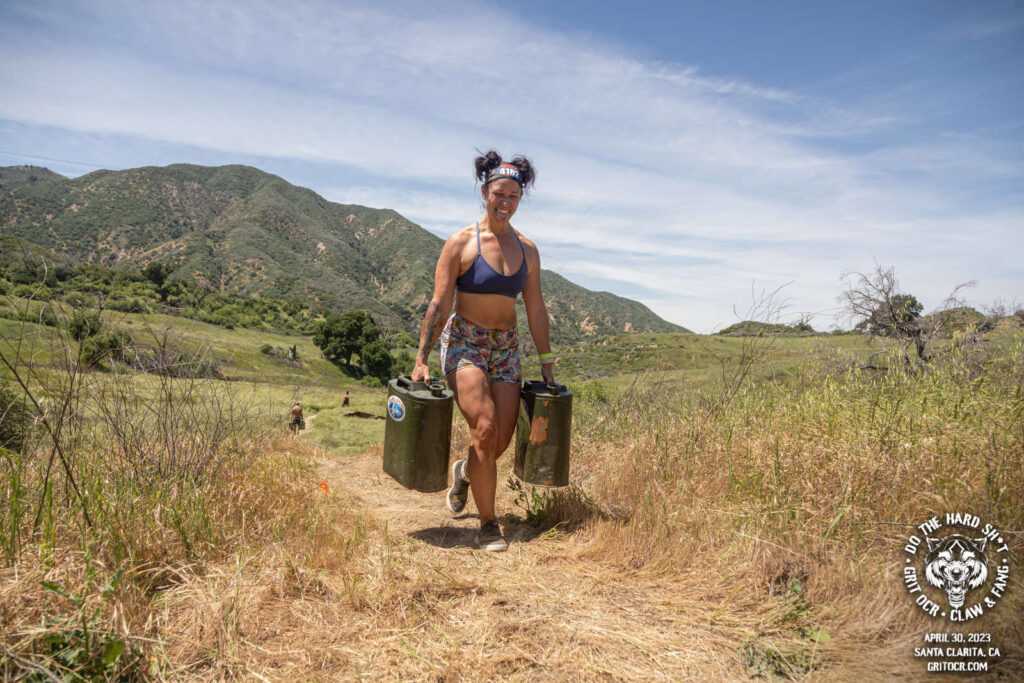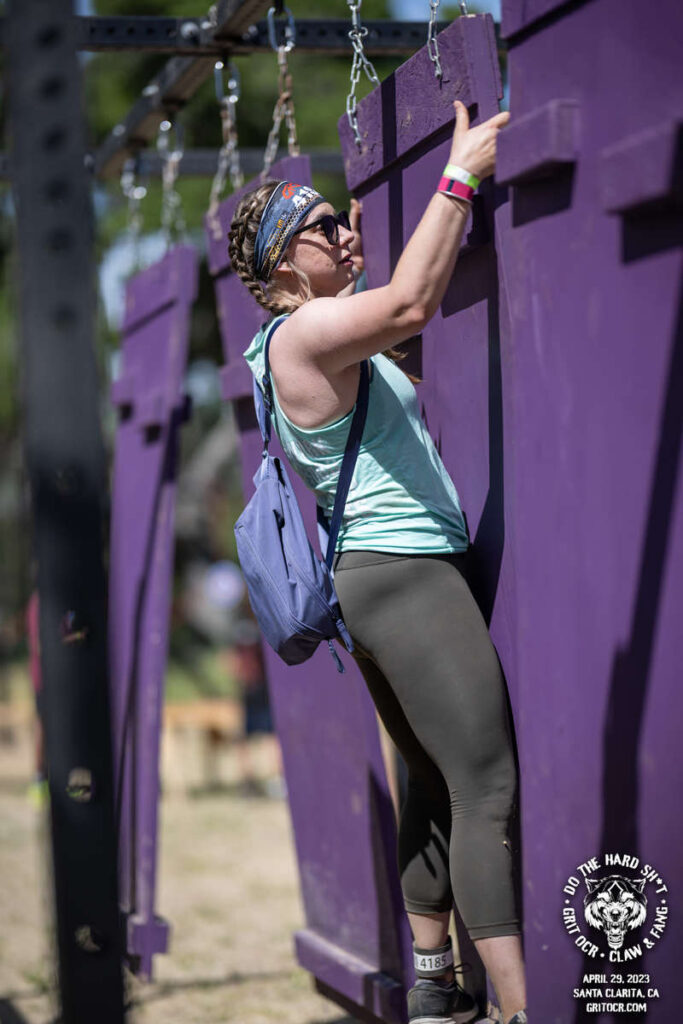How the Love of Group Suffering Created a Passion Project Called Grit
In 2011 Antonio Alletto was staring out his office window in Van Nuys, California. He saw two women sprinting down the street carrying heavy med balls, suffering in the hot Southern California sun.
Kris Clever and Becca Voight were coming from Valley CrossFit, and Alletto was witnessing CrossFit in its infancy.
With a background in general weightlifting and playing football, Alletto was no stranger to suffering. He loved the gym culture and pushing himself to the limit, and discovering CrossFit was another thing to add to the repertoire. He knew it was for him after the first workout of the 2012 Open–seven minutes of burpees.
Alletto reflects on the experience:
- “I remember thinking; I can totally do that. I got 72, and I watched Kris Clever get 143. I was lapped by the short, kind, unassuming woman, and it was amazing. I was so humbled.”
Alletto settled into CrossFit, using it more for training for the many other physical activities he was into. He got into ultra-running, rucking, competitive arm wrestling, strongman competitions, and more, all while using CrossFit as his fitness base. Alletto loved using his body.
- “CrossFit gave me the ability to do all those things. I never trained for anything specifically, yet I wasn’t terrible at anything. I felt well-rounded for everything I tried, and I never was worried about being able to figure it out. Mud Runs, long endurance races, all of that.”
Mud runs and obstacle runs started to be Alletto’s favorite, and it was the suffering part that he specifically connected to.
- “I always relate to the team aspect of football and CrossFit and that family aspect. I started taking that into mud runs when we ran as a big team, and that taught me a lot about my job. So, I started incorporating this mindset at work too–it has become part of my whole life now. I loved suffering as a team, I love suffering in these mud runs and suffering as a team at work.”
Alletto wanted to turn his love of suffering into something fitness related.
He just didn’t know what. One thing he did know was what he would call it, and in classic water cooler chat, he put the name out there.
- “I’m just going to put out a brand–it could be a clothing brand, or it could be a supplement brand or anything. We started sponsoring local events like trail runs, OCR, and CrossFit competitions and putting our name out there. I would show up, and people would ask me what it was, and I wouldn’t have an answer for them, but I knew what it was called.
- “ It was called Grit. I would bring a whole bunch of fitness equipment to an event and set it up. And people would just play around. There wasn’t a purpose at that point, but I had a name.”

Many people would have called Alletto crazy at this point.
Who starts a company with no clue about the product but is dead set on the name?
- “We sponsored the 2017 Spacerock trail race, and I brought my entire gym there–150-pound med balls, kettlebells, all this stuff for people to play around with. On my way out at the end of the day, I told the organizer they had a great event. It was well organized–I loved the vibe, the signage, and the medals. I asked her if they ever thought about hosting an obstacle course race, and she turned to me and said, “yup, you and I will do it together.” I was like, okay, crazy lady.”
- “In bed that night, I realized it was a great idea, and that’s how I started. It made sense; I had the resources to build the obstacles, a background in construction, and a team of people that could help me do it. And then I had this other company willing to do the logistics, the website, and everything else. A great partnership.”
The rest happened quickly:
- “I sat down, and I started laying stuff out–what it would cost to build these obstacles. It took me about a week, and I presented it to them and asked if they wanted to bring us on as a part of their company. They did, and then the rest just happened.”
Having a partner was vital for Alletto. It allowed him to focus on the obstacles without securing a location, paying for permits or insurance, dealing with noise ordinances–all the boring stuff.
While still working his full-time job installing high-end home entertainment systems, Alletto immediately went to work building obstacles in his garage.
The first year was hit-and-miss.
- “There were a lot of failures, but some of the best moments were when I would think of something at night–I’d be lying in bed, and I would draw it out. I never drew anything out on paper; I would draw it in my head. Then I would go to Home Depot the next day and build it, and if it worked, it was the best day ever.”
Finding a place to put everything was another issue.
- “Storage-wise, it was first my garage, storage unit, and then our warehouse. The first year was a combination of all three and a logistical nightmare because we had to go to three places to get everything with a U-Haul. And by the time I got everything to the site and set it up, I was already exhausted.”

They built over 20 obstacles the first year, hoping for maybe 100 attendees. Alletto knew it would be a financial loss off the bat, but he hoped it would grow. Six months before the event, only 20 people had signed up. By the time race day rolled around, 600 people were registered and ready to go.
It felt like a low number to Alletto, but when he talked to other race organizers and discovered they were having 200-300 people, he started to feel good. Six hundred people without one piece of advertising was incredible. But then he realized he had been advertising.
- “I realized it was getting the name out at events that did it. People remembered Grit because they saw it at a trail race or at OCR. I was huge into OCR at the time, so I would wear a Grit hat and Grit shirt, and I’d be wearing a weight vest, and people would notice me. It just snowballed into that. It was 600 people from word of mouth alone.”
The race continued to grow, hitting 1600 participants in 2020, with the event date just a few weeks before COVID started to shut everything down. Post-March 2020, it was a bit of a rebuild, but the people continued to come, many from out of town, and many for multiple years and multiple races.
- “We put together a difficult course, and people resonate with being part of that and the sense of accomplishment they get with it. For example, I put many grip obstacles together with long, grueling, heavy carries, and I put them right after long uphills.”
- “I tried to mess with people mentally–it’s one of my favorite things. This year when people were running down this hill, they thought it was the end of the race, but I turned them around and sent them up a one-mile hill with a ruck on their back just when they thought they were about to get to the end.”
Alletto doesn’t program without a purpose.
- “I want the course to imitate life. When you feel you’re about done and everything is about to be fine in life, something always comes up. And people don’t get to flex that muscle until it happens. I want people to have that mental breakdown to know it’s possible to get through it.”
- “That’s what I love about CrossFit–it gives you that basic mental toughness aspect many people lack.”
It isn’t always perfect, and Alletto owns up to his mistakes. And he has made a lot of them along the way.
- “I take failure head-on. Every year I highlight the things that I did wrong and things I did right, and I think it’s essential as a business owner to do that. I believe it is important for people to know that I care when things go wrong. And it’s important for everybody to accept when they fail; failure is so big for me – I love failure. It fuels me.”
- “For instance, so many people who run the race can’t climb the rope we have, but I hope failure fuels those people who can’t do it. It’s how you handle it. Can you come back next year and try again after working on it all year? Or you can say, nope, I just can’t do it. I want to allow people to flex that part of their lives.”
The annual GRIT OCR event at East Walker Ranch is rated as one of the best OCR events in California and the West Coast. It is an obstacle course racing over two courses, the Claw race with an 8.5-mile course and the Fang race with a 5.5-mile course, both peppered with over 20 signature obstacles and challenges. Want to learn more?Check it out here.